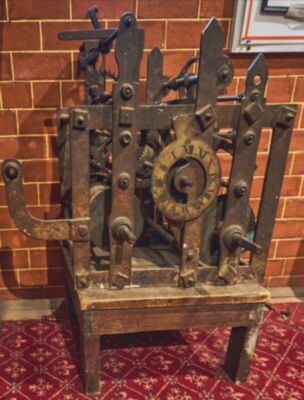The Controversial Clock of St. John's Church
Identifer
ASJ2025.19Physical Description
By the 1820s, early Launceston was gradually changing from a settlement of tents and huts into a small town, and with the completion of St. John's Church in 1825, an opportunity arose to install a town clock in its tower, so all could see the time and set their own clocks and watches.
The earliest clock was installed in 1826, and its mechanism can still be seen in the church museum. It was replaced in 1830 by a more advanced clock and bell, the tower being extended upwards to accommodate the latter.
With the end of government funding of the church in the 1840s, the issue of responsibility for the maintenance, winding and setting of the clock became controversial. The townspeople argued that the church was well-paid from various fees and could afford it, and the church argued that it was a public asset which happened to be situated in the church tower, so the local council and townspeople should pay, as they needed it as mentioned.
The late Jenny Gill's 2016 lecture (linked) gives a fascinating insight into the controversy, and the longer history of the clock.
Historical Details
In the earliest colonial period, convicts and the poorer classes (the bulk of the population) would not have been able to afford personal clocks and watches. At the same time, both classes were required to work for specified hours.
The clock at St. John's performed an important role as the town clock for much of the colonial period, regulating working hours and transport timetables. There was public acrimony when the clock (this one and its successor) failed to keep correct time, and the church felt that the clock, expensive to maintain, should be subsidised by the government and community.
Materials
digital documentDating of Item
1826-2016Database Date: Faculty Date:
14 October 2025;Online Sources
https://resources.allsaints.network/histcoll/index.php/Detail/objects/ASJ2025.10
